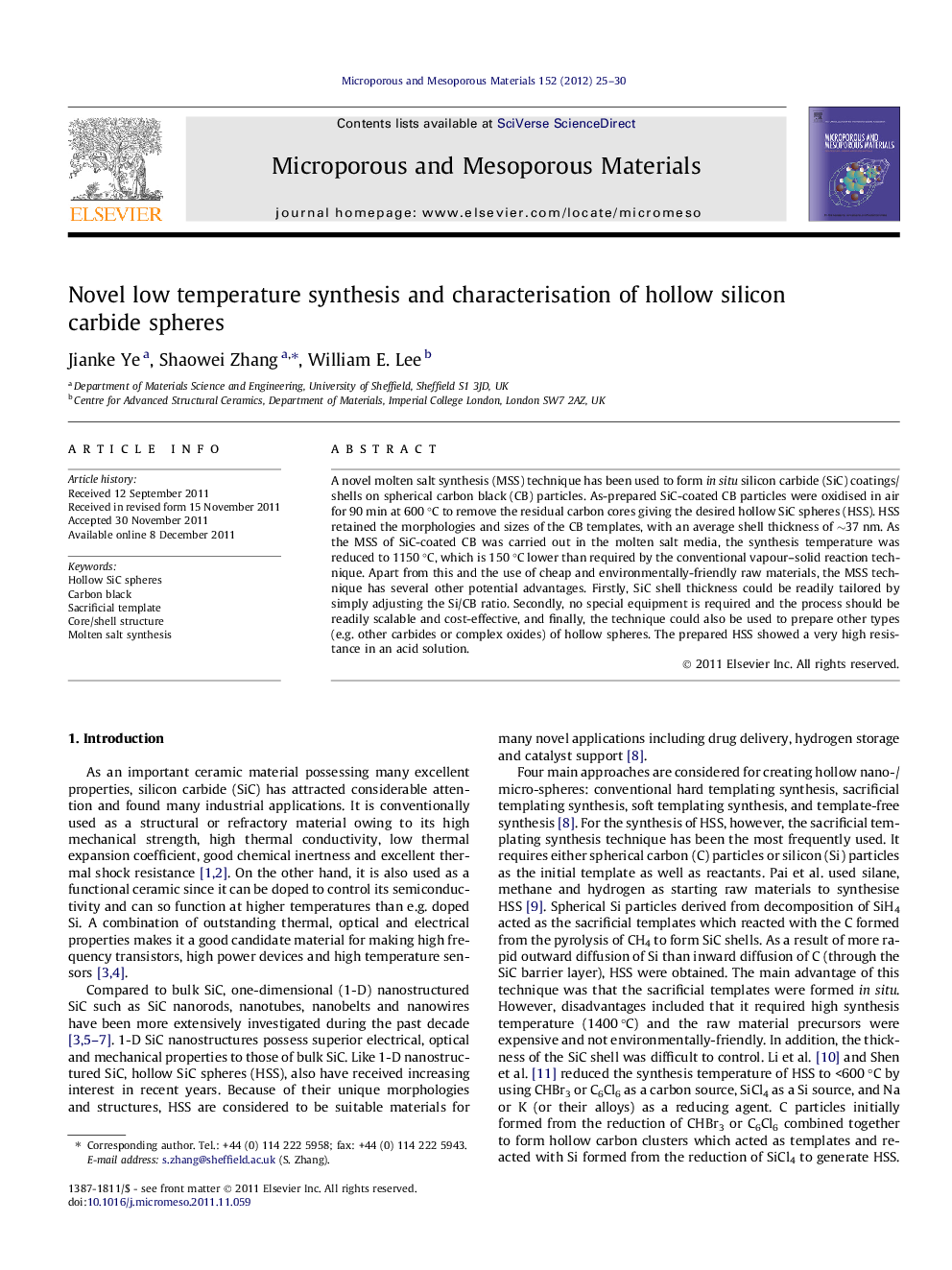| Article ID | Journal | Published Year | Pages | File Type |
|---|---|---|---|---|
| 74774 | Microporous and Mesoporous Materials | 2012 | 6 Pages |
A novel molten salt synthesis (MSS) technique has been used to form in situ silicon carbide (SiC) coatings/shells on spherical carbon black (CB) particles. As-prepared SiC-coated CB particles were oxidised in air for 90 min at 600 °C to remove the residual carbon cores giving the desired hollow SiC spheres (HSS). HSS retained the morphologies and sizes of the CB templates, with an average shell thickness of ∼37 nm. As the MSS of SiC-coated CB was carried out in the molten salt media, the synthesis temperature was reduced to 1150 °C, which is 150 °C lower than required by the conventional vapour–solid reaction technique. Apart from this and the use of cheap and environmentally-friendly raw materials, the MSS technique has several other potential advantages. Firstly, SiC shell thickness could be readily tailored by simply adjusting the Si/CB ratio. Secondly, no special equipment is required and the process should be readily scalable and cost-effective, and finally, the technique could also be used to prepare other types (e.g. other carbides or complex oxides) of hollow spheres. The prepared HSS showed a very high resistance in an acid solution.
Graphical abstractFigure optionsDownload full-size imageDownload as PowerPoint slideHighlights► High quality hollow SiC spheres were prepared using a new molten salt technique. ► The synthesis temperature is much lower than used by the conventional methods. ► The morphology and shell thickness of hollow spheres are readily controllable. ► The technique could be similarly used to prepare other types of hollow spheres. ► The synthesis process is easy to operate, cost-effective and readily scalable.
